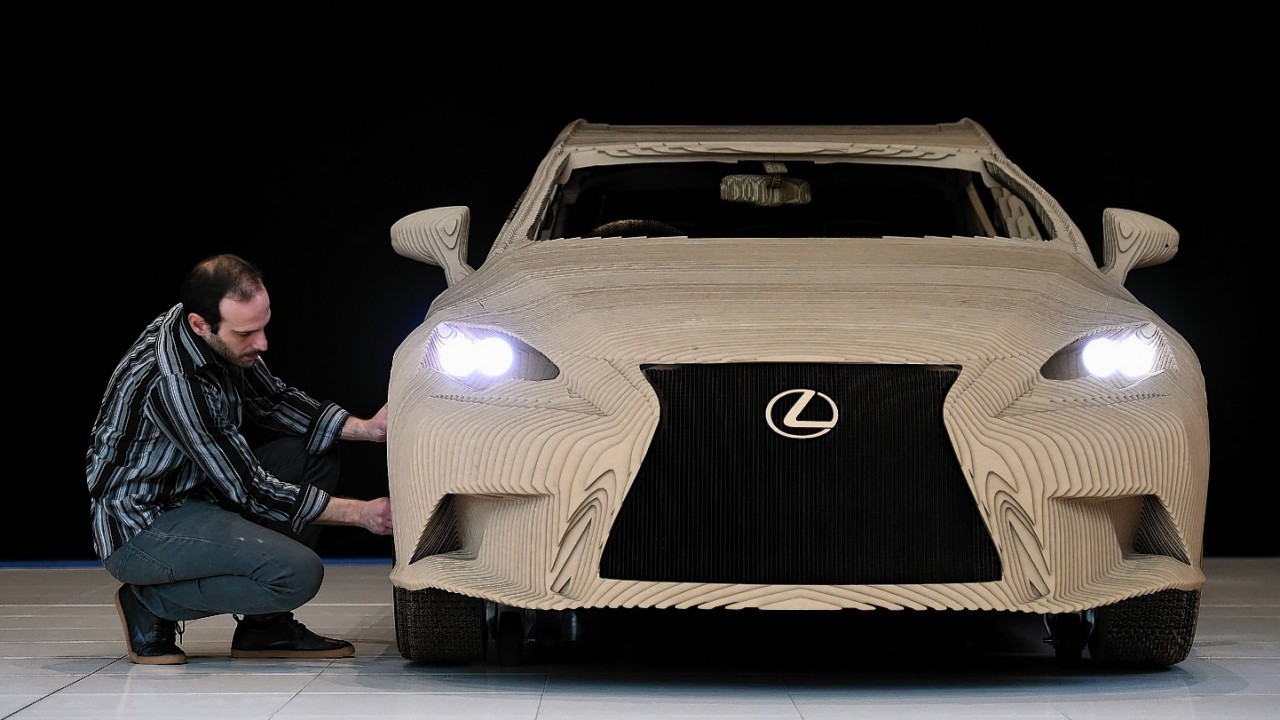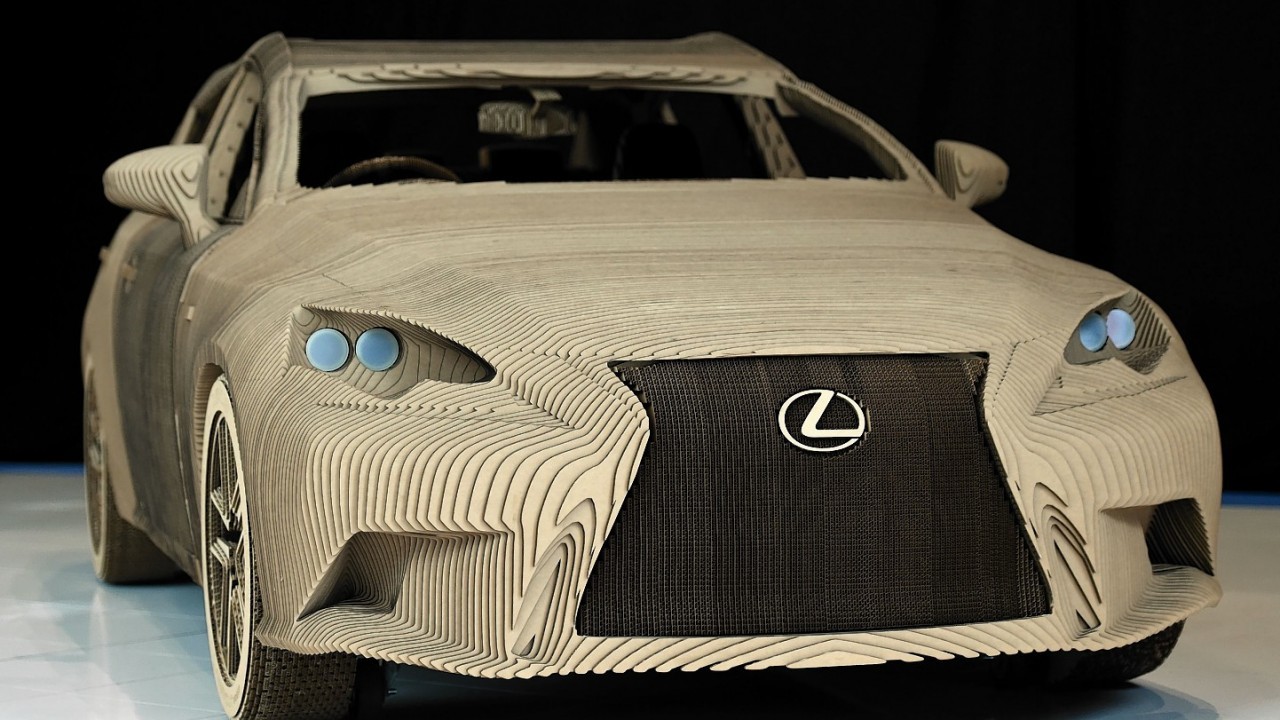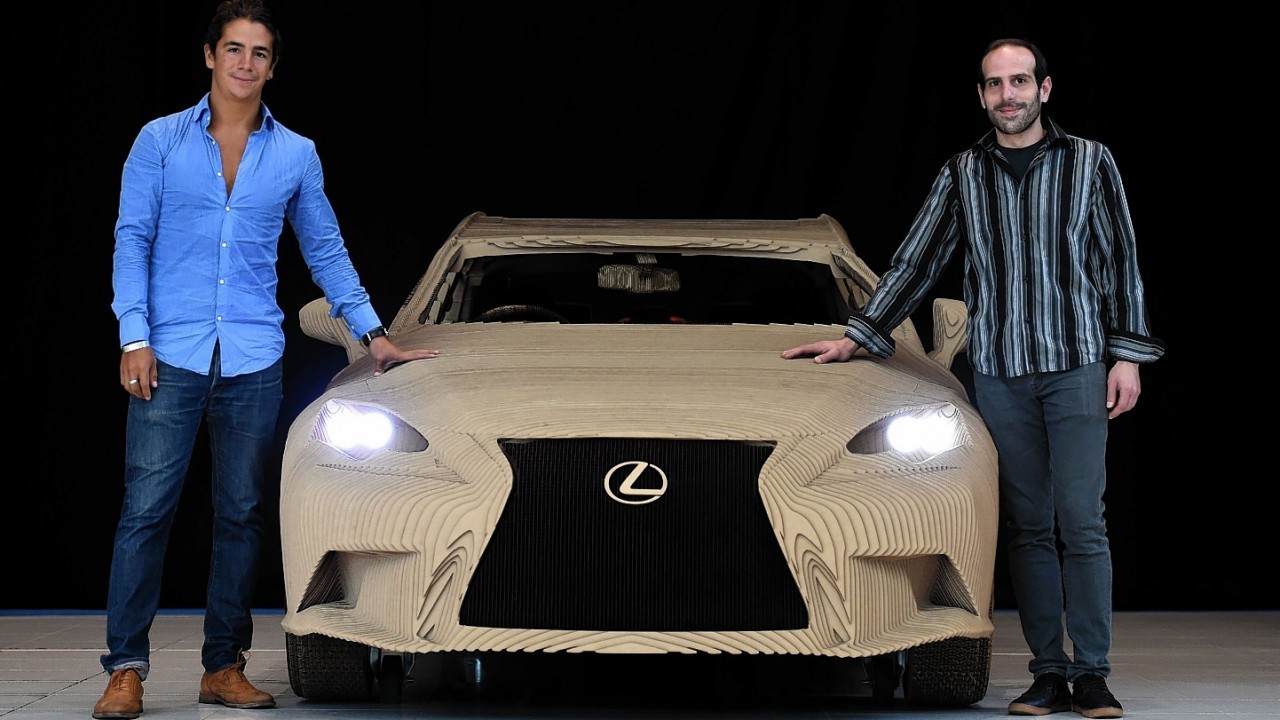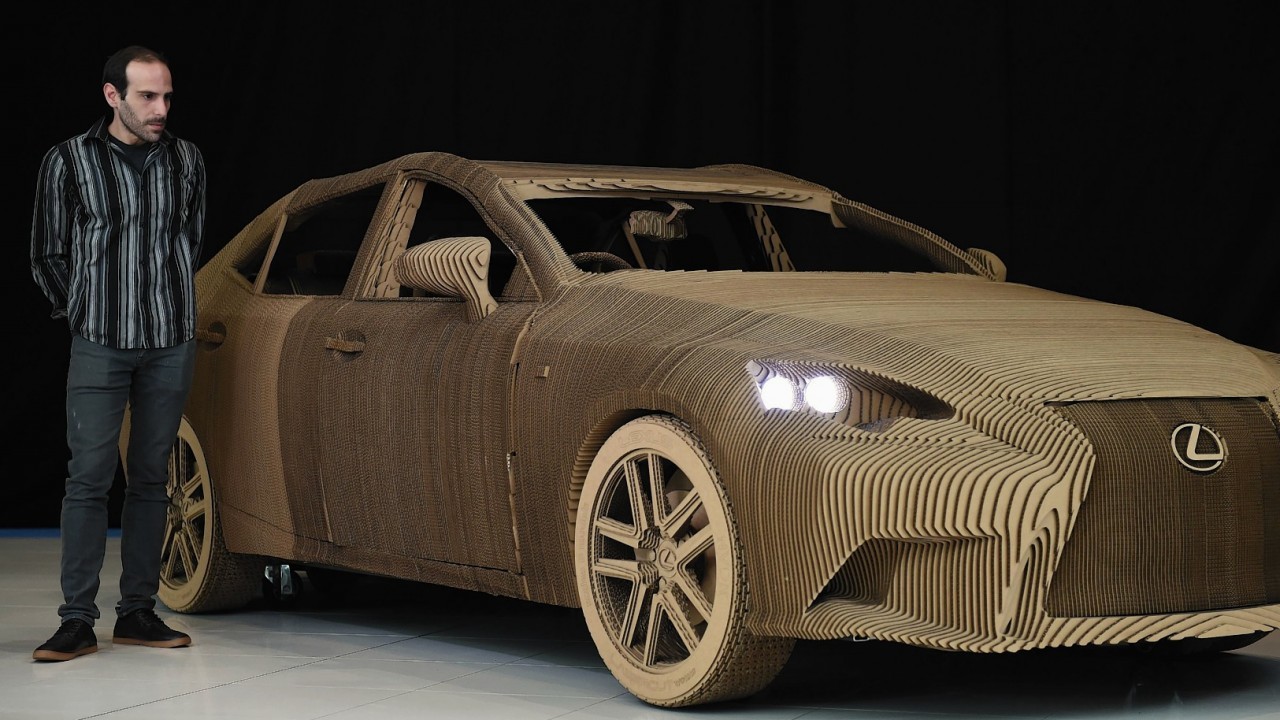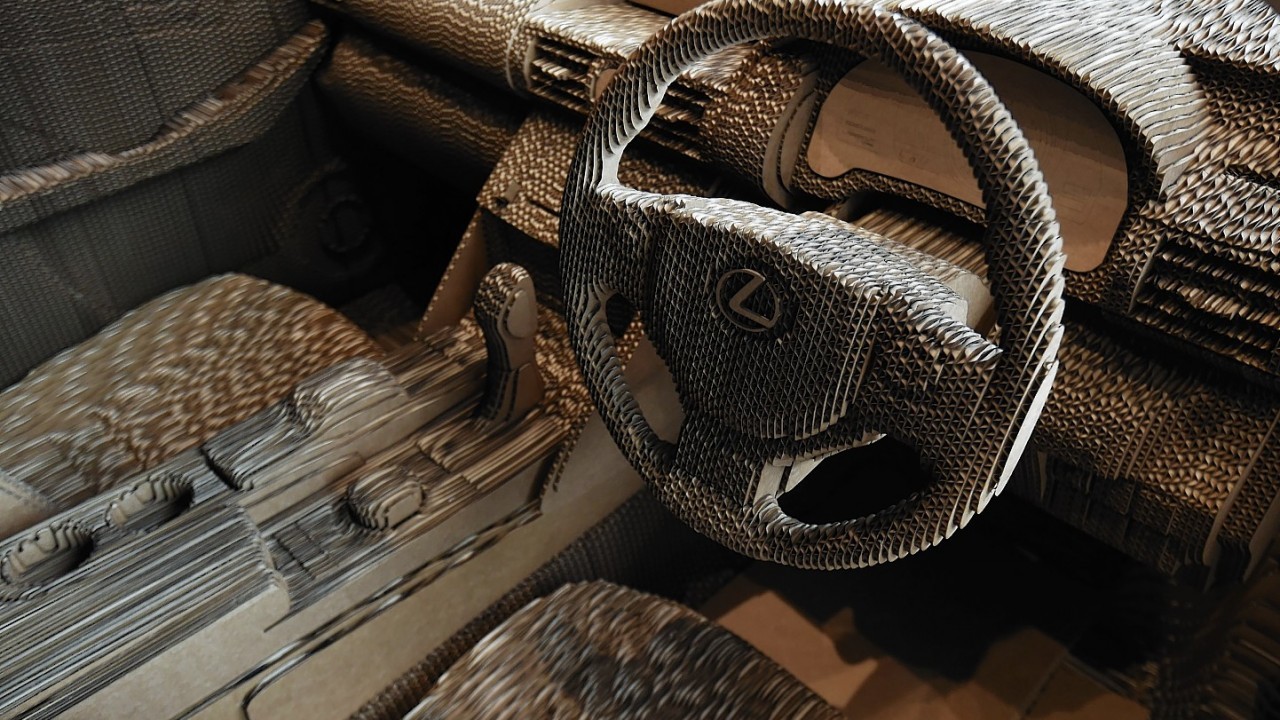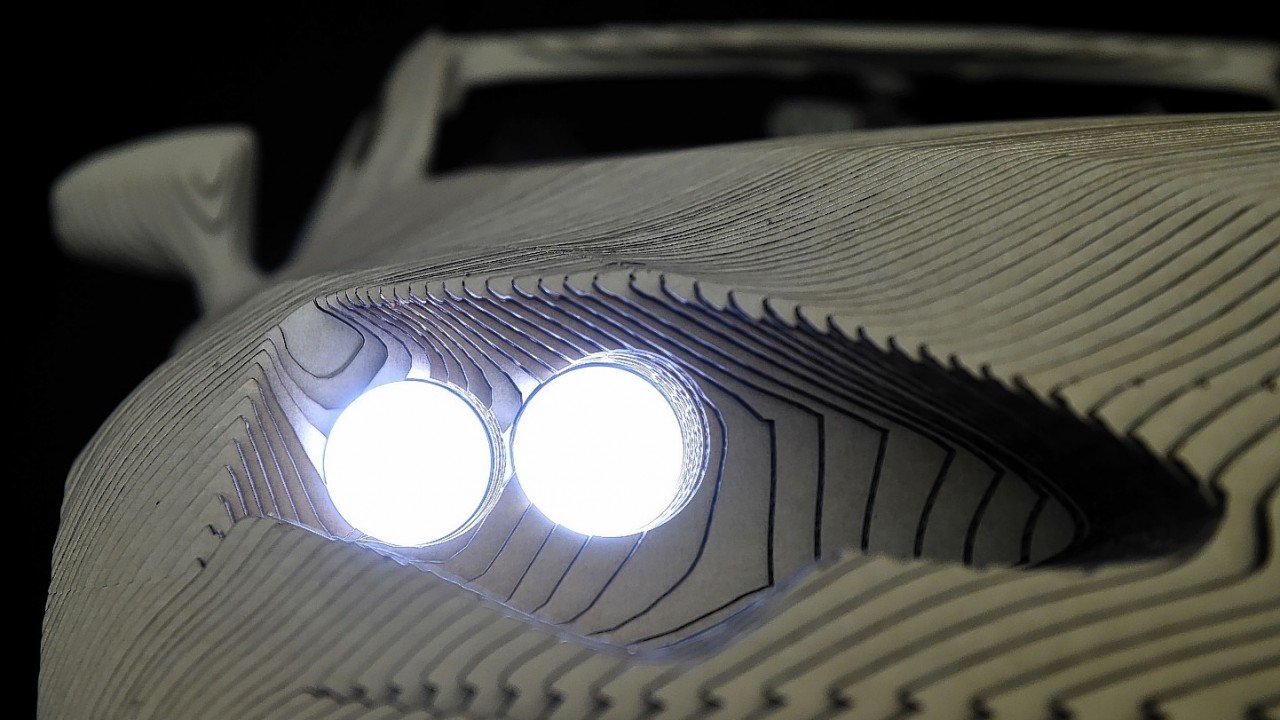Stunning new images have been released showing the world’s first origami car.
The vehicle was unveiled by designers at Toyota’s Surrey headquarters yesterday.
A replica of the new Lexus IS saloon, the vehicle was inspired by the people – named the takumi – who are employed on the company’s production line.
Each worker is expected to show their craftsmanship by creating an origami cat using their non-dominant hand.
The car took three months to make and is powered by an electric motor, with its headlights, doors and wheels are all functional.
A team of professional designers and modellers cut the cardboard material which creates a 3D effect.
The car was the result of a partnership between design and model companies LaserCut Works and Scales and Models with the help of cardboard manufacturer, DS Smith.
Ruben Marcos, founder and director of Scales And Models company said the design and production process was particularly challenging.
He said: “The seats took a few attempts to get just right and the wheels required a lot of refining.
“Once we could see the physical pieces taking shape, we could identify where we needed to make improvements.
“As with anything, there were some elements of trial and error but, as we had all the resources we needed in-house, this made the changes easier to produce.”
Lexus provided the team with a digital 3D model of the IS, which was then divided into a series of principal parts, such as the main body, dashboard, seats and wheels.
These were then used to create a profile of the car which was used to laser cut 1,700 sheets of 10millimetre-thick cardboard.
The sheets were then stuck together with a water-based wood glue, which was left to dry for 10 minutes after each application.
Accuracy was vital as alterations could not be made once the adhesive had dried.
The public will have a chance to get a first-hand glimpse of the replica, when it is displayed at the Grand Designs Live Show a
t Birmingham’s NEC on Thursday.

